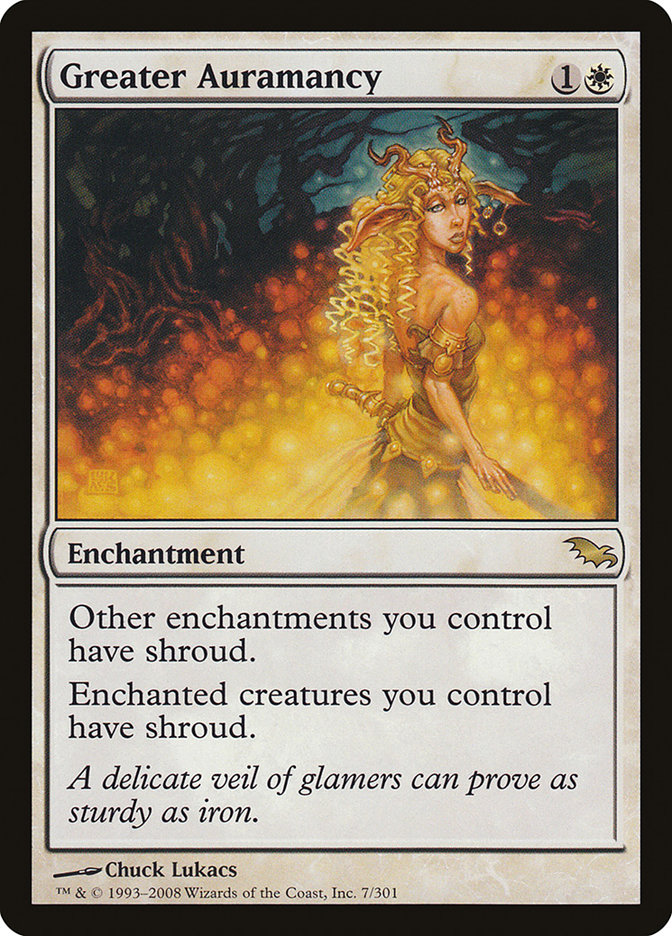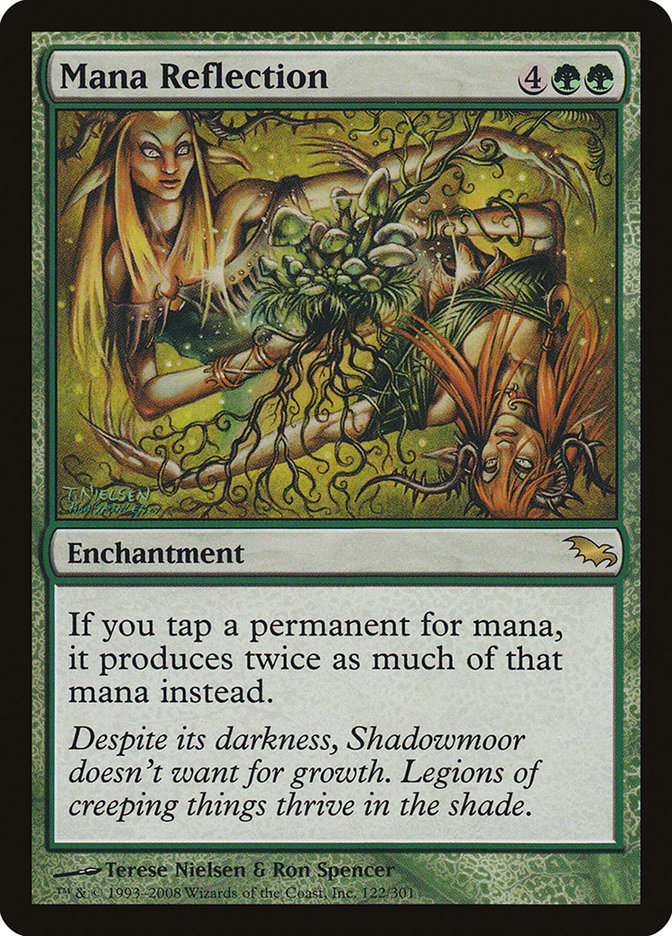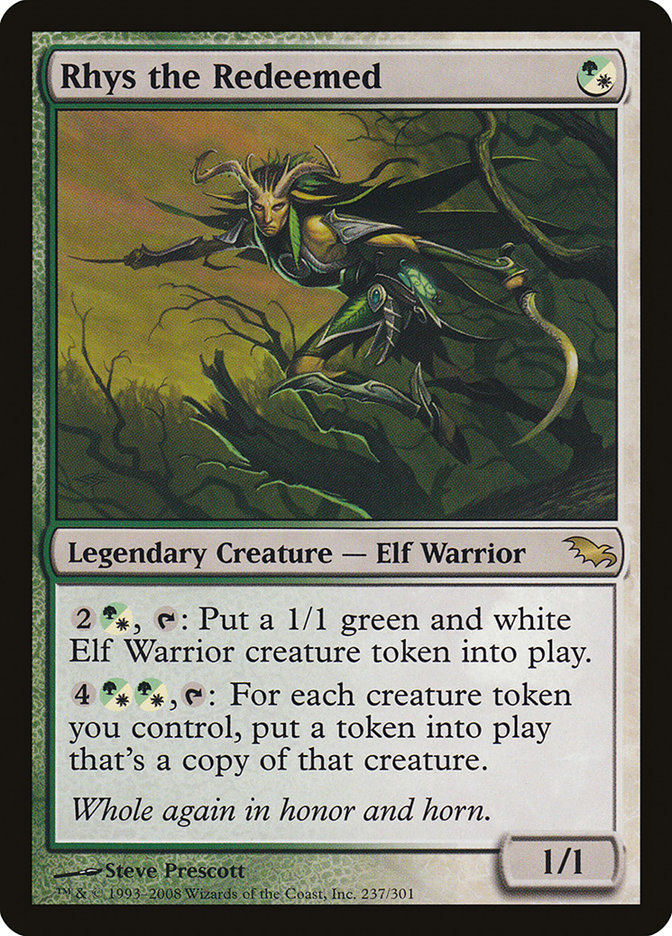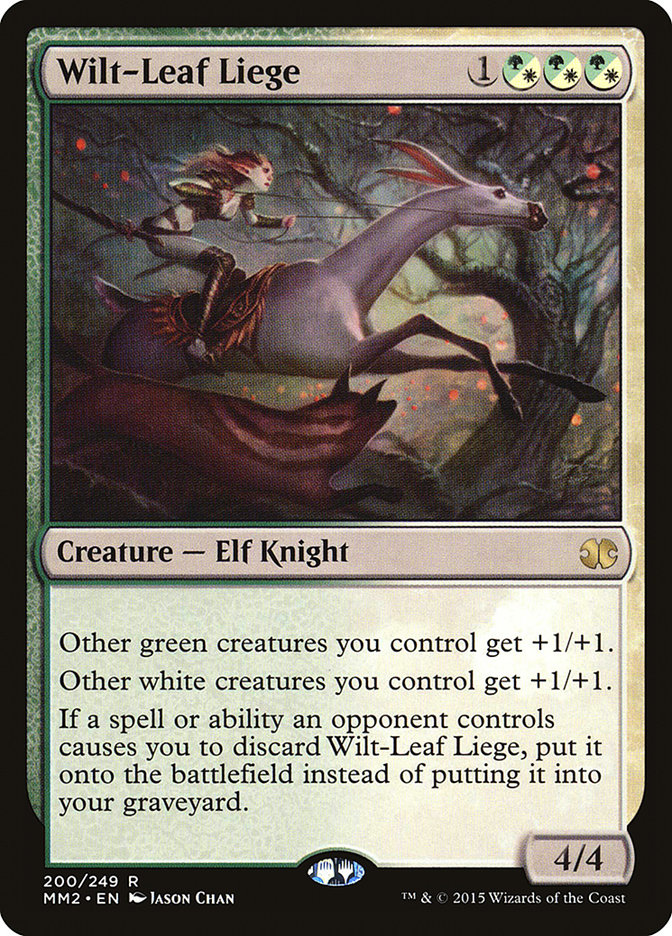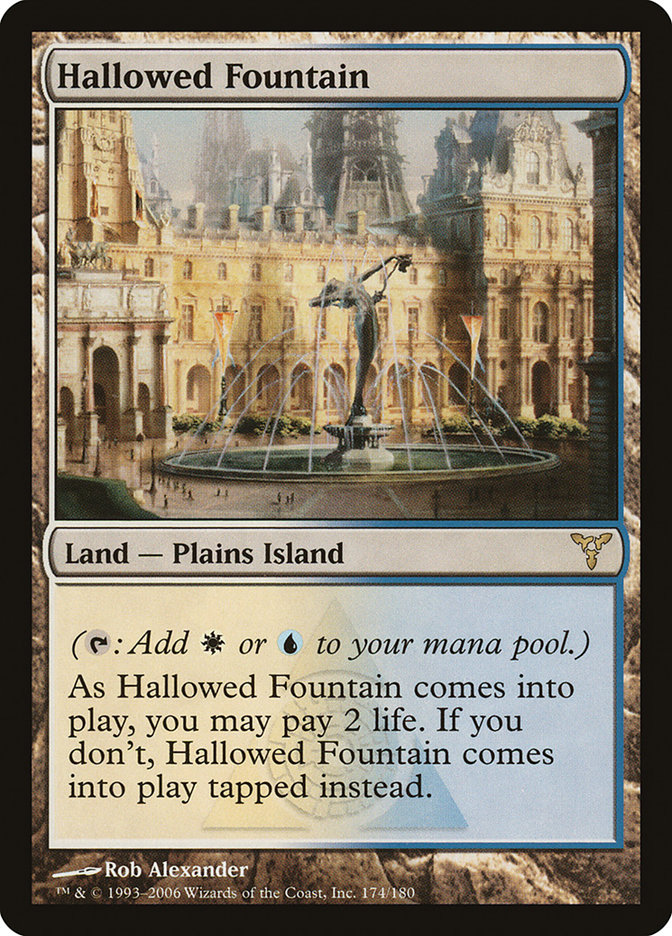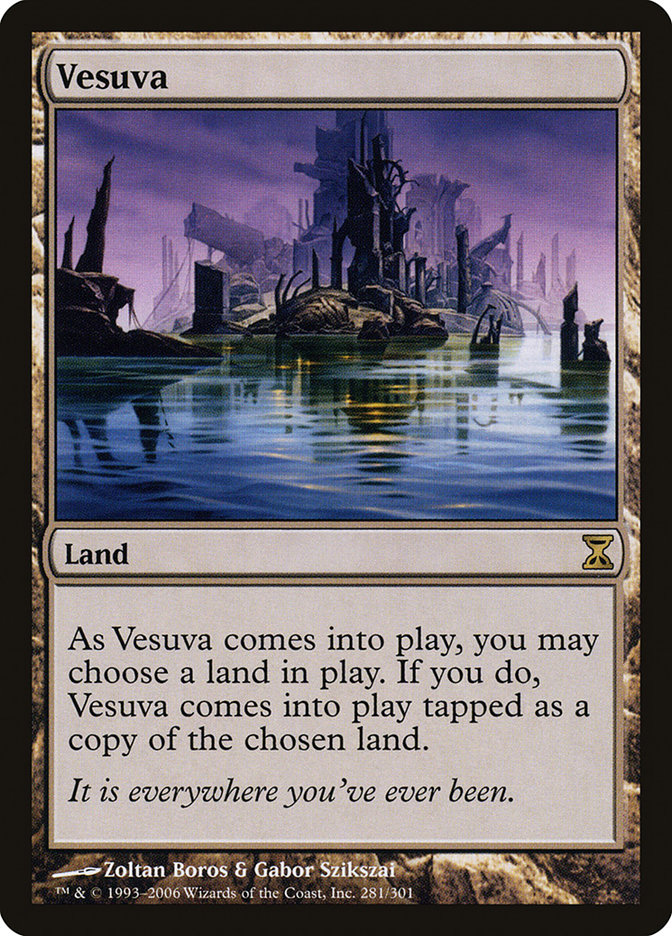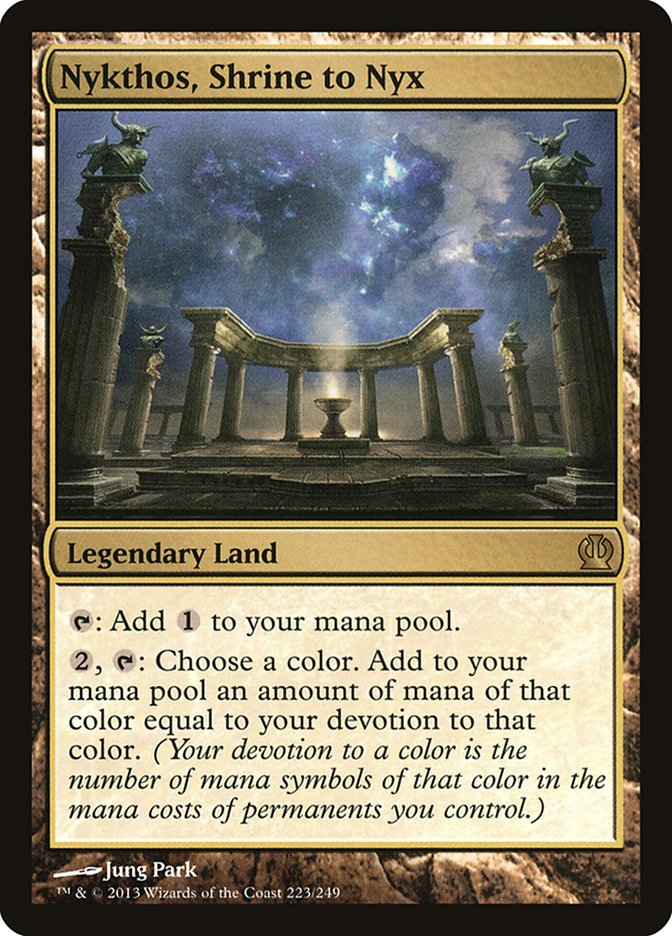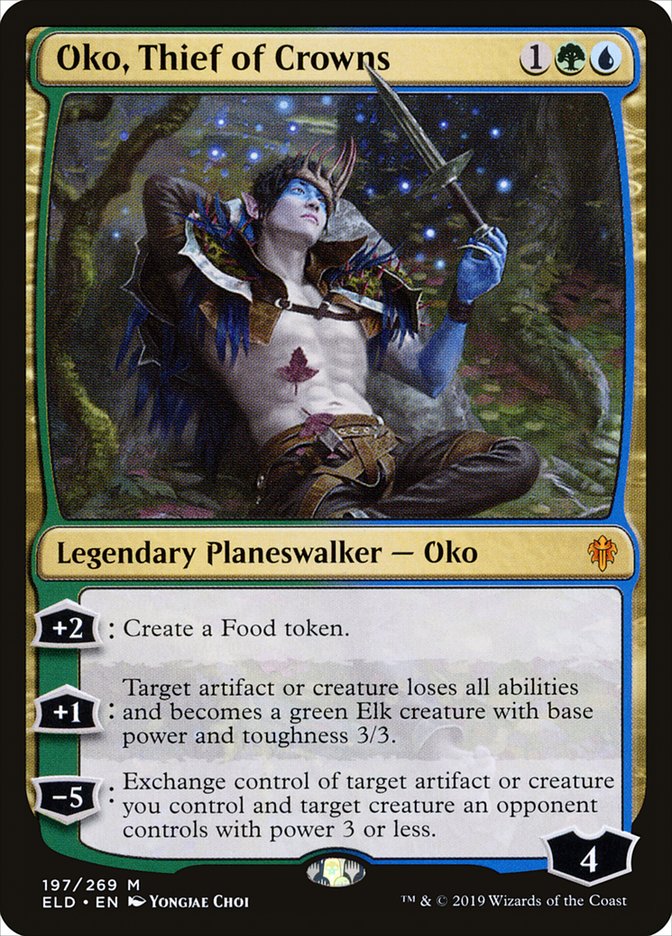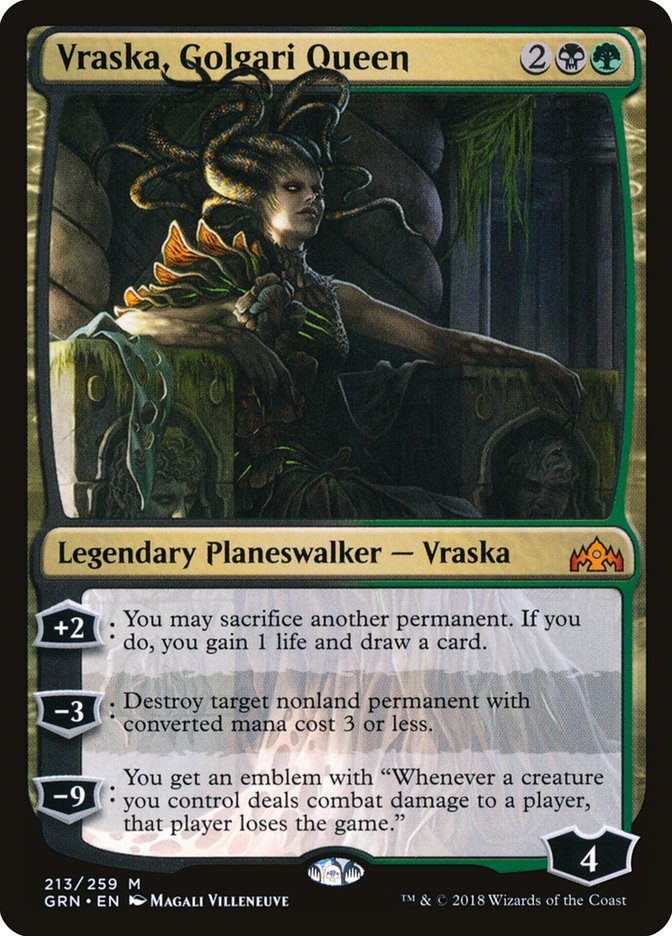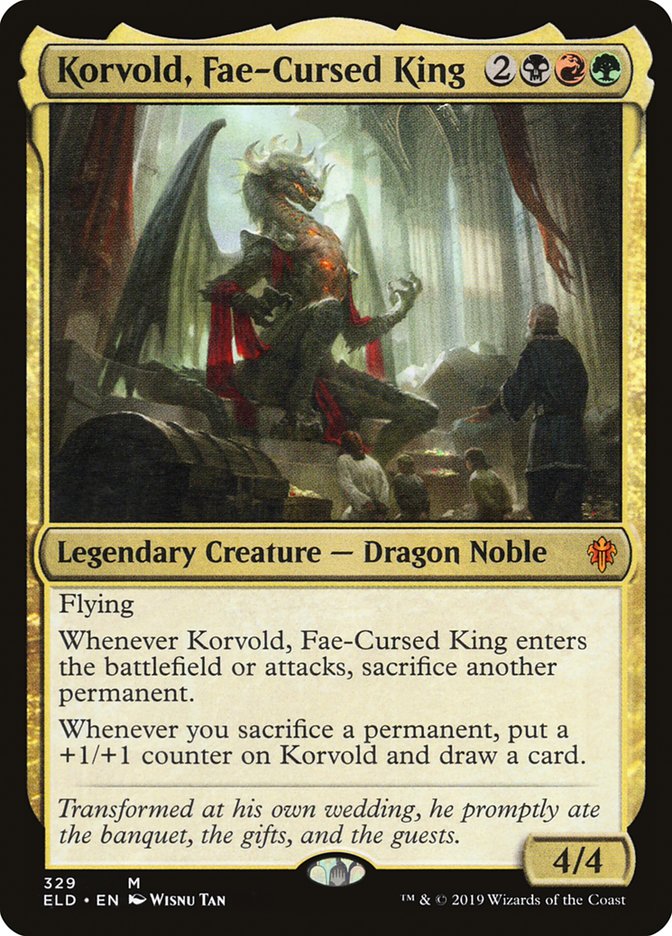I can see why Wizard of the Coast called the format Pioneer – it feels like the Wild West out there right now.
I feel reasonably certain that some sort of Azorius-based Control deck will be good, Smuggler’s Copter will be great, and that Aetherworks Marvel is going to be one of the key combo decks in Pioneer’s initial metagame. There’s a whole lot of uncertainty beyond that, though. Is Dig Through Time too good? Is Siege Rhino unplayable? Ask three different Pioneer brewers and you’ll get three different answers.
I’ll attempt to cut through some of this uncertainty today, but my main goal is to help you develop a plan for building your Pioneer collection over the long haul. I want to look at the format’s short-term outlook and trends, but I think it’s even more important to take a step back and think about the best way to future-proof yourself for Pioneer. After all, how nice would it have been to have the option of playing almost every potential Modern deck at any point over the past eight years without having to go out and buy a bunch of expensive cards? I’m pretty sure I’ve had dreams about that.
So let’s begin with what might be the most important – and most difficult – step:
Accept That Nobody Knows Anything
Believe it or not, I was actually writing about Magic finance back when Modern was first announced. It was my 30th ever article, and it was a whole different world back then. 2011 was the era of smartphone-free trade binder grinding, Legacy price spikes, and learning how to deal with the sharks at your LGS. Pack to Power was still a thing, and I was in the process of turning a pack of Zendikar into an Alpha Mox Sapphire.
Even though Magic finance is an entirely different beast nowadays, I figured it would be useful to go back and see which cards I recommended picking up back at Modern’s inception. Were the best cards in Modern immediately obvious or did the format’s key staples take a while to reveal themselves?
The results are decidedly mixed. For example, here’s what my initial Modern rundown of Shadowmoor looked like, complete with vintage 2011 price tags:
Shadowmoor
- Reflecting Pool – $12.99
- Demigod of Revenge – $8.99
- Sunken Ruins – $7.99
- Mystic Gate – $6.99
- Wooded Bastion – $6.99
- Wilt-Leaf Liege – $5.99
- Fire-Lit Thicket – $4.99
- Kitchen Finks – $4.49
- Vexing Shusher – $3.99
- Cursecatcher – $3.49
- Graven Cairns – $3.49
- Firespout – $1.49
- Swans of Bryn Argoll – $1.49
With the Vivid lands not being good enough for Modern, I doubt either Reflecting Pool or the filter lands will be all that fantastic this time around. Remember: these were popular speculation targets for last year’s Extended, and they weren’t really good enough for that. You can’t fetch for them, so they’re pretty much strictly inferior to shocklands at this point. They’re not even cheap enough to be great budget options.
Will Demigod be good enough to make it into whatever version of Jund makes the cut? Put that on your ‘check in a few weeks list.’ Heck, who knows if Jund will even make an appearance in the format!
I do predict that Kitchen Finks will be around, though, and these should be stable in the $5 range for a while.
This blast from the past shows just how foolhardy it can be to try and predict what the next year of a format is going to look like, much less the next eight years. Plus, who could have predicted the meteoric rise of Commander, which caused all the filter lands to surge in price over the next couple of years? Seriously, Commander staples Greater Auramancy, Mana Reflection, and Rhys the Redeemed are currently the three most expensive cards in Shadowmoor.
Even worse, the most impactful Modern cards in Shadowmoor aren’t even on this list. I left off Prismatic Omen, Fulminator Mage, and Manamorphose entirely. Meanwhile, Demigod of Revenge has literally done nothing but drop in price for almost a decade, an afterthought in every casual and competitive format.
You can certainly blame past-me for getting this stuff wrong, and it’s true that I made some pretty egregious mistakes when I put this list together. I wasn’t alone, though. Fulminator Mage was close to a bulk rare in 2011, and I didn’t have Prismatic Omen on the list primarily because Valakut, the Molten Pinnacle was on the initial Modern Banned List. Things change over time, sometimes quite a lot, and it’s hard to ignore recency bias at the time or hindsight bias now.
Also, many of Modern’s most interesting cards have also had massive spikes and drops over the past eight years. Take Wilt-Leaf Liege, a card that was just $6 back in 2011. The card jumped to $15 in early 2013, and then $20 at the end of 2014. By the start of 2015, it was a staple in Modern’s best deck and it peaked at a high of $40. Shortly thereafter, it was reprinted in Modern Masters 2015. Then it fell into irrelevance. Star City Games now sells Wilt-Leaf Lieges for just $2.50.
If you read my entire 2011 Modern rundown, you can find some excellent buys mixed in with the head-scratchers. Gifts Ungiven for $4. Blood Moon and Ensnaring Bridge for $5 each. Chalice of the Void for $13. Cryptic Command, Aether Vial, Noble Hierarch, and Engineered Explosives for $15. Damnation for $20. Living End for $0.79. I even recommended picking up Vendilion Clique and Tarmogoyf at their “post-spike” prices of $40 and $100, respectively, and that would have been a killer decision providing you sold out at any point over the next three to four years.
We definitely knew some of the cards that would make up the bedrock of the Modern metagame, but we didn’t know them all. We couldn’t know them all. We were biased toward recent results, and we had no way of predicting future bannings, printings, etc. It’s pretty clear one of the biggest mistakes I made in my 2011 review of future Modern staples was to keep the lists as small as I did. I should have recommended that people buy even more cards, including some that had never seen competitive play at all.
Should We Just Be Buying Everything?
Honestly, it’s hard looking back on my 2011 Modern review without wanting to reach into the computer and yell “Just buy everything you can, silly!” at my past self. It’s true that Demigod of Revenge would have been a pretty poor buy at $9, but I could have made my money back on almost any other rare in the set. It’s hard to think of too many things that would have been better to invest in than the Modern index in early 2011.
That said, there are a few reasons why buying everything now might not be a great plan.
First off, the massive surge in Magic prices between 2011 and 2015 had more to do with an increase in the size of the player base coupled with the rise of Commander than it had to do with Modern’s success. Casual cards weren’t worth much before 2011, which certainly isn’t the case now. Plus, a lot of those Shadowmoor cards gained ten times their value in large part because the player base increased by a similar amount between Shadowmoor and Return to Ravnica. While Arena has increased the size of Magic’s player base over the past year or so, I don’t think we can safely predict that things will double, and double again, and double again after that in every year from 2020-2022. (Of course, the Magic TV show is coming next summer, so I could be wrong!)
There have also been changes to the world of Magic finance over the past eight years that put a damper on the “just buy everything” idea.
The market moves faster now, for one. The most obvious Pioneer staples sold minutes after the announcement, which means that you’re buying in at post-spike prices now. Back in 2011, cards took at least a day to sell out, and you could still find deals on oddball corners of the internet if you knew where to look (not to mention the binders down at your LGS).
WotC is also a lot freer with reprints these days. There were two full years between the inception of Modern and the first Modern Masters set, which were filled with non-stop gains. It’s possible that WotC is going to leave Pioneer alone for a bit, but there’s a very, very good chance that those Mystery Boosters WotC announced last week are filled with Pioneer staples, designed to ramp down prices and keep Pioneer as cheap as possible.
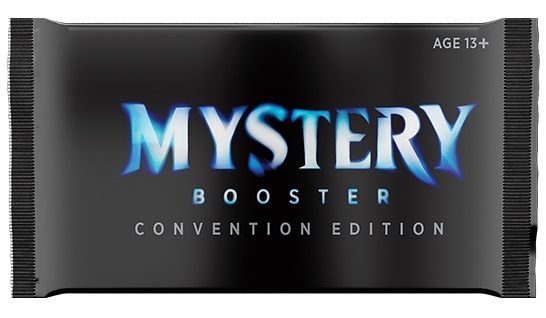
And then there’s the fact that…well, there were some Modern cards that you absolutely should not have bought into back in 2011, especially at their post-spike prices.
Let’s take a look at Hallowed Fountain, though the same trend holds true for all the shocklands. The card was worth about $15 before Modern was announced, and it spiked to $40 immediately afterward. It would never be worth that much again, despite being a staple of the Modern format. Granted, it didn’t really drop off all that much over the next year or so, but it was down to $30 by the time it was reprinted in Return to Ravnica. Then it dropped to $15. Then $10.
Vesuva is a different sort of cautionary tale. The card jumped from $10 to $30 when Modern was announced, and it quickly became a staple in the format’s first best deck. The deck was nerfed into oblivion in Modern’s first B&R announcement, and the card sunk back down to $10 shortly thereafter. It didn’t hit $30 again until earlier this year.
Despite everything I’ve just written, I’m not sure how much any of it dissuades me from pursuing the “just buy everything” plan. Aside from a few reprints and bannings, most of the key cards in Modern did continue to rise in price after their initial spike, and you would have done well to buy into the hype. Take Dark Confidant, which spiked from $20 to $45 when Modern was announced. Then it continued to rise in price for the next four years, peaking at close to $100 in 2015. Dozens of cards followed similar trajectories, including cards like Tarmogoyf that aren’t even all that good in Commander, meaning that their gains were almost entirely due to the rise of Modern.
It’s possible that the player base won’t grow fast enough, the current supply is high enough, or the reprints will be consistent enough to keep Pioneer prices relatively low. That doesn’t mean that you shouldn’t buy into the format now, though; it just means that the gains won’t be as significant as they were when Modern was announced. That’s a good reason to avoid throwing all your spare money at Pioneer staple spec targets, but it doesn’t dissuade me from wanting to build as large a personal Pioneer collection as I can, as soon as possible.
Mining Pioneer for Future Staples
Of course, buying four copies of every Magic card released between 2015 and now is both expensive and unnecessary. We can do better. At the very least, we should talk about the cards that have already spiked due to Pioneer hype as well as those that are still flying under the radar despite being worth a slot in your collection.
Let’s start by listing all the Pioneer cards that have gained at least $5 over the past week according to the MTG Goldfish price charts:
- Jace, Vryn’s Prodigy – up $25 to $45
- Liliana, the Last Hope – up $20 to $50
- Teferi, Hero of Dominaria – up $15 to $35
- Grim Flayer – up $10 to $18
- Thoughtseize – up $10 to $30
- Torrential Gearhulk – up $8 to $13
- Collected Company – up $8 to $20
- Emrakul, the Promised End – up $8 to $35
- Mana Confluence – up $8 to $26
- Aetherworks Marvel – up $6 to $10
- Mox Amber – up $6 to $25
- Spell Queller – up $6 to $16
- Botanical Sanctum – up $5 to $10
- Blooming Marsh – up $5 to $10
- Smuggler’s Copter – up $5 to $8
- Saheeli Rai – up $5 to $15
- Abrupt Decay – up $5 to $10
I’ll be covering most of these cards in detail during the next part of this article, but it’s worth taking a look at this list as a whole beforehand. Even though there are plenty of other cards that are likely to be slam-dunks in Pioneer, these cards are the best of the best – powerful cards that seem destined to see a lot of play in control and combo decks early on. While I’m skeptical that a few of them will avoid a banning – Smuggler’s Copter and Aetherworks Marvel most of all – there probably isn’t a world in which at least 75% of these cards aren’t key Pioneer staples in six months.
Lands
Let’s use the above list to discuss some of Pioneer’s key categories one at a time, starting with its lands. Some of the best lands in the format gained at least $5 last week: Mana Confluence, Botanical Sanctum, and Blooming Marsh. Mana Confluence is necessary in some of the greedier decks, while the Kaladesh land cycle is probably the second-best fixing in the format. All three of these cards look like safe buys to me – unlikely to get banned, and incredibly likely to see a lot of play in the format going forward, regardless of what decks end up developing.
Looking further down the list of last week’s gainers, I’d also like to recommend the following lands as well:
- Inspiring Vantage – up $4 to $9
- Nykthos, Shrine to Nyx – up $3 to $20
- Spirebluff Canal – up $3 to $10
- Concealed Courtyard – up $2 to $6
My guess is that all four of these lands will have gained at least $5 by the next time I look in on the format’s values, and you should prioritize them if you can.
Going beyond the cards that have gained ground so far, I feel like my Pioneer collection also demands a full set of Dominaria‘s rare lands, the Battle for Zendikar rare lands, the checklands, the Pioneer-legal creature-lands, and the painlands.
All these cards are pretty cheap right now as they’re both out of Standard and not on anybody’s top Pioneer spec lists at the moment. Several of them are going to end up in top tier brews at some point over the next couple of years, though, and they should steadily gain value over the next several years. You don’t have to run right out and buy these under-the-radar lands tomorrow, but they’re solid trade targets and throw-ins to have in the back of your mind over the next few months.
Honestly, nearly all Pioneer-legal rare or mythic rare nonbasic lands are worth considering right now as well. Here are some potential spec targets:
- Inventors’ Fair – $5
- Lotus Field – $5
- Blast Zone – $4
- Field of the Dead – $4
- Westvale Abbey – $4
- Haven of the Spirit Dragon – $2.50
- Karn’s Bastion – $2
- Spire of Industry – $2
- Thespian’s Stage – $1.50
- Crucible of the Spirit Dragon – $0.50
- Mobilized District – $0.50
Not all of these cards will be good in Pioneer. Most of them probably won’t do anything at all. But if we look back at this format in eight years like we did today with Modern, I bet you’ll be thinking, “Dang, I wish I’d just bought a playset of each of those cards for their 2019 price tag.”
Utility
Next up, let’s talk about the utility cards on the $5-and-up list: Abrupt Decay and Thoughtseize. The problem with speculating on cards like this is that most of the utility cards that saw play in their respective Standard environments are unlikely to be powerful enough for Pioneer, like how Hero’s Downfall was so good in Standard and such a dud in Modern.
On the other hand, we already know that Abrupt Decay and Thoughtseize are likely to be format-defining cards no matter what. Not only are both spells good enough for Modern, they’re good enough for Legacy, too. If you’re building a Pioneer collection, you’ll need four copies of each of these two spells, and I can’t imagine the metagame evolves in a way that’ll make them unplayable.
Looking further down the list, we find a few additional utility cards that gained value last week:
- Kolaghan’s Command – up $3 to $30
- Atarka’s Command – up $3 to $5
- Dig Through Time – up $3 to $8
- Tireless Tracker – up $2 to $16
- Search for Azcanta – up $2 to $10
- Oath of Nissa – up $2 to $3
- Collective Brutality – up $2 to $16
These are all worth picking up as well, though be aware that Kolaghan’s Command and Collective Brutality might get hit with a reprint at some point soon. Regardless, all of these cards are likely to be among the format’s most-played spells early on. It’s also nice to know that utility cards are rarely hit with a banning, give or take the occasional Faithless Looting, so you can be fairly confident that your investment will hold value for a while.
It’s harder to find sleeper utility cards, especially since so many of the best ones are commons and uncommons, but here are a few I’d take a look at:
- Sylvan Caryatid – $5
- Courser of Kruphix – $4
- Swan Song – $4
- Hero’s Downfall – $4
- Dreadbore – $4
- Detention Sphere – $3
- Settle the Wreckage – $2
- Declaration in Stone – $1
- Den Protector – $0.75
- Mizzium Mortars – $0.50
- Painful Truths – $0.50
- Crackling Doom – $0.50
Even though I used Hero’s Downfall as a negative example just a few paragraphs ago, I feel like the card might actually be in the sweet spot for Pioneer. It’s not good enough for Modern, but I expect this format to be a lot more planeswalker-centric and amenable to three-mana spot removal.
Also, before you write off the 50-cent cards, let me remind you that some of the best cards in Modern over the years were bulk rares before the format’s inception. If a card is great in Standard but not good enough for Modern, it can easily fall below $5 and end up being a solid pick-up for Pioneer. A lot of these cards are going to be stellar in Magic’s newest format and grabbing a bunch of them for your long-term collection might end up paying huge dividends.
Planeswalkers
The three biggest Pioneer gainers so far have been planeswalkers (Jace, Vryn’s Prodigy; Liliana, the Last Hope; and Teferi, Hero of Dominaria) with a fourth (Saheeli Rai) close on their heels. It’s quite likely that at least one of these ‘walkers will be deemed too powerful for Pioneer and banned, but the ones that aren’t will remain among the format’s most expensive cards for years to come. Magic’s current era has been defined by planeswalkers more than any other card type, and Pioneer looks like it’s going to be a veritable planeswalker-palooza.
A few other planeswalkers also gained value this week due to Pioneer:
- Gideon, Ally of Zendikar – up $4 to $12
- Chandra, Torch of Defiance – up $3 to $18
It’s possible that these two will simply prove too expensive (mana-wise) for Pioneer, but they are still among the highest-upside spec plays in the entire format. In fact, let’s take a look at some of the other planeswalkers that we should consider picking up soon as well:
- Elspeth, Sun’s Champion – $14
- Nissa, Vastwood Seer – $10
- Liliana, Death’s Majesty – $8
- Gideon of the Trials – $5
- Chandra, Flamecaller – $3
Note that I’m specifically ignoring planeswalkers that are still Standard-legal, like Oko, Thief of Crowns and Narset, Parter of Veils. These would be among the best specs in the format if demand weren’t already so high, but alas.
Combo Pieces and Enablers
Early on, Pioneer is going to be defined by combo decks. Let’s take a look at some potential builds and talk about the key cards from a finance perspective:
Creatures (16)
- 3 Jace, Vryn's Prodigy
- 3 Emrakul, the Promised End
- 3 Ishkanah, Grafwidow
- 3 Servant of the Conduit
- 4 Rogue Refiner
Lands (17)
Spells (27)

Aetherworks Marvel is the first place that most combo brewers are going to start with Pioneer, and this Sultai build (courtesy of Gerry Thompson) seems incredibly strong. Financially, the key combo pieces and enablers here are Aetherworks Marvel and Emrakul, the Promised End, both of which were among the week’s biggest gainers. Note that Ishkanah, Grafwidow looks like it’ll be a part of this deck as well, and you can still pick those up for just $1.50 – bulk mythic prices. I highly recommend doing so.
I’ve also seen builds of Aetherworks Marvel with Kozilek’s Return; Ugin, the Spirit Dragon; and Ulamog, the Ceaseless Hunger. If any of these cards end up in the consensus Day 1 build of Marvel, you can expect some pretty major gains there as well.
From there, let’s go to other elephant in the room – Four-Color Saheeli. Here’s a list that Emma Handy cooked up last week:
Creatures (15)
Planeswalkers (11)
Lands (15)
Spells (19)

Aetherworks Marvel makes another appearance here, this time next to Saheeli Rai. The other key expensive cards in this list are all Standard-legal, though – this is one of the best decks for Oko and Teferi, both of which will be key Pioneer staples for years to come. This deck seems less likely to get hit with an early banning to me, but Saheeli could still get the axe if WotC wants to be hyper-aggressive about this stuff. Regardless, Aetherworks Marvel seems like the most likely card to get axed early on, and both decks rely on the card to varying degrees.
Let’s also not forget that Golos, Tireless Pilgrim and Field of the Dead are both legal together in Pioneer. The relatively recent nature of this combo doesn’t make it bad, and it’s quite possible that we could be looking at Golos Marvel early in the format:
Creatures (17)
- 4 Jace, Vryn's Prodigy
- 3 Emrakul, the Promised End
- 2 Whirler Virtuoso
- 4 Golos, Tireless Pilgrim
- 4 Emry, Lurker of the Loch
Lands (20)
- 1 Yavimaya Coast
- 1 Shivan Reef
- 1 Steam Vents
- 1 Breeding Pool
- 1 Sulfur Falls
- 1 Temple of Epiphany
- 1 Radiant Fountain
- 1 Shrine of the Forsaken Gods
- 1 Mortuary Mire
- 1 Sea Gate Wreckage
- 1 Drownyard Temple
- 1 Inventors' Fair
- 1 Aether Hub
- 1 Spirebluff Canal
- 1 Botanical Sanctum
- 1 Spire of Industry
- 1 Ipnu Rivulet
- 1 Blast Zone
- 1 Field of the Dead
- 1 Fabled Passage
Spells (23)
- 1 Mountain
- 1 Island
- 4 Terrarion
- 4 Aetherworks Marvel
- 4 Woodweaver's Puzzleknot
- 3 Harnessed Lightning
- 4 Glassblower's Puzzleknot
- 2 Mox Amber
Sideboard

I’ve seen a couple of different brews of this one, some with Emrakul and others with Ulamog and Karn, the Great Creator. I also wouldn’t sleep on Mox Amber, which gets a lot better in a format that is going to be defined by cheap artifacts and planeswalkers. That card could easily go from being a Standard bust to being banned in Pioneer.
If you’re looking for a combo deck that doesn’t involve either Saheeli or Aetherworks Marvel, you might want to consider God-Pharaoh’s Gift. Here’s a Mono-Blue version that looks pretty solid to me:
Creatures (35)
- 4 Chief Engineer
- 4 Sidisi's Faithful
- 4 Hangarback Walker
- 4 Glint-Nest Crane
- 4 Minister of Inquiries
- 4 Walking Ballista
- 4 Emry, Lurker of the Loch
- 4 Stonecoil Serpent
- 3 Merfolk Secretkeeper
Lands (7)
Spells (18)

This deck is still flying pretty far under the radar, so there haven’t been any real GPG spikes yet. Hangarback Walker and Walking Ballista are almost certainly going to end up being Pioneer staples one way or the other, though, and Chief Engineer is a bulk rare with a lot of room to run. The deck’s eponymous card is also less than $1 right now, and that’ll certainly change at some point. Even if God-Pharaoh’s Gift doesn’t take off right away, do you really want to bet that the deck will never end up making a run at Pioneer’s top tier?
There are quite a few other potential combo decks that’ll make themselves clear over the next couple of weeks, and they will end up dominating the format during its first few months of life. Instead of staying away entirely, I recommend buying in if the price is right. You don’t want to hold these cards long-term, but short-term demand should cause spikes nonetheless. I’m probably not picking up any Aetherworks Marvels for my long-term Pioneer collection, but there could be quite a bit of money in, say, picking up Ishkanah, Grafwidow for $1.50 and looking to sell in the $5-$8 range several weeks from now.
Mono-Red Aggro Staples
None of the key Mono-Red Aggro cards have spiked very hard yet, but some of them will. Mono-Red Aggro sees play across nearly every constructed format, and it was one of the best decks in Standard during the lifespan of quite a few of Pioneer’s most powerful sets. While Mono-Red Aggro cards tend to stay cheaper than cards from combo and control decks, you should still venture to pick up its key staples.
Here’s one list that really interests me, courtesy of Autumn Burchett:
Creatures (20)
- 4 Eidolon of the Great Revel
- 4 Monastery Swiftspear
- 4 Bomat Courier
- 4 Hazoret the Fervent
- 4 Rampaging Ferocidon
Lands (4)
Spells (36)

In their article, Autumn says that they built this deck to accommodate Rampaging Ferocidon, which means that it “goes big” with three- and four-drops like the Ferocidon and Hazoret the Fervent. Regardless, this seems like a great place to start. Here are the key rares and mythics:
- Eidolon of the Great Revel – $10
- Smuggler’s Copter – $8
- Rampaging Ferocidon – $5
- Hazoret the Fervent – $5
- Bomat Courier – $1
Rampaging Ferocidon is quite unlikely to see a ban in Pioneer as well as Standard, but Smuggler’s Copter has to be on WotC’s list of potentially problematic cards. I can’t imagine a world where aggro decks are playable in Pioneer and Smuggler’s Copter isn’t too good, but we shall see. If Smuggler’s Copter is allowed to stay, $8 is a bargain. Regardless, the rest of these cards are probably on their way up, and this deck can certainly function with or without the Copter.
Autumn’s list has a pretty high curve for a Mono-Red Aggro deck, so if you’re planning to go a little smaller, then you probably want Soul-Scar Mage and Goblin Chainwhirler somewhere in your 75. Both of these cards are less than $5 right now and seem worth picking up as well.
Other Early Brews
It’s too early to say exactly how the Pioneer metagame is going to shake out, but that doesn’t mean we can’t take a look at some of the sweet archetypes that are coming together and help predict which staples might shine. I’m not going to include decklists here since they’re all so rough, but I recommend following the Pioneer Decklists Twitter account, which has been retweeting spicy brews all week long.
Azorius Control looks like it’s going to be pretty terrific in Pioneer. Four of the deck’s key staples were on this week’s $5-and-up spikes list: Jace, Vryn’s Prodigy; Teferi, Hero of Dominaria; Torrential Gearhulk; and Spell Queller. Dig Through Time almost certainly belongs in this deck, and I’d take a look at Supreme Verdict, Disallow, and potentially Approach of the Second Sun as well.
There will almost certainly be some sort of Collected Company deck in Pioneer, probably either Bant or Abzan. Collected Company was on our gainers’ list this week, and it’s one of the safest buys in the format right now because it’s backstopped by Modern demand. Collected Company is likely to get reprinted sooner or later, but you’re golden until that happens. These early Company decklists are all over the place right now, but Tireless Tracker, Spell Queller, Knight of Autumn, and Brimaz, King of Oreskos all look like potential staples to me.
Don’t sleep on Sultai Dredge, a deck that Liz Lynn has been working hard on for the past week. This one runs Deathrite Shaman; Elder Deep-Fiend; Prized Amalgam; Sidisi, Brood Tyrant; and Smuggler’s Copter alongside a bevy of powerful commons and uncommons. These cards are among the most synergistic ever printed, and without fetchlands the deck might be fair enough (Smuggler’s Copter aside) to avoid a banning.
I can’t imagine Pioneer will avoid some sort of Green-Based Ramp deck, though it’s still very unclear what colors it’ll end up favoring. This is yet another home for Oath of Nissa and Sylvan Caryatid, alongside heavy hitters like Polukranos, World Eater; Hornet Queen; Walking Ballista; Ulamog, the Ceaseless Hunger; Ugin, the Spirit Dragon; and perhaps even Emrakul, the Promised End. The Gruul versions with Xenagos, the Reveler and Dragonlord Atarka look great to me as well, though perhaps the key is to focus on devotion and generate a lot of mana with Nykthos, Shrine to Nyx.
I could keep going. There are Humans decks; Jund decks; Prime Speaker Vannifar decks; Feather decks; Ilharg, the Raze-Boar decks; and Enchantress decks. You can play Voice of Resurgence next to Dromoka’s Command, or Goblin Rabblemaster next to Rotting Regisaur. Spend too long looking at Pioneer decklists, and it’s easy to get overwhelmed.
My best advice to you at this point is to be proactive. If you feel like a card is being underrated, it probably is. The format is so new and the buy-in is so low on most of these cards that you should err on the side of buying now and worrying later.
In terms of building your collection, I suggest stockpiling pretty much every interesting land, planeswalker, utility spell, combo piece, and former Standard staple that you can. As with all eternal formats, spells are better bets than creatures. Pioneer is still cheap enough that you don’t really have to risk losing a ton of money on anything that doesn’t end up paying off, and your hits should more than pay for your misses.
If you want to play combo, get in now. Seriously. Aetherworks Marvel is $10 right now, which isn’t bad for a card that’s likely to headline the best deck in the format for a couple of months. If you buy in now, you’ll be able to play with the deck for a bit and still potentially sell your copies at a profit.
What you don’t want to do is be stuck paying $20 for the card a month from now. Pioneer is open enough – at least for now – that you don’t really have to chase any of these cards if they spike too hard. Buy the staples that you want, pick up the under-the-radar cards on your list, and don’t worry about chasing the hottest thing out there right now unless it’s a deck you desperately want to play.
This Week’s Trends
It seems silly to talk much about Standard prices when we’re a week removed from a major banning and two weeks away from the next Mythic Championship. All I’m going to say is that so far, it seems as though the “Oko is still too powerful!” crowd is exactly right. Oko, Thief of Crowns; Questing Beast; Fabled Passage; and Once Upon a Time all spiked following the ban, and their increased price tags have been fairly stable over the past week or so. Expect them to slowly erode, however, as supply increases and murmurings of a second banning continue to grow.
The most interesting spike of the week? Vraska, Golgari Queen, which saw a surge in price starting last Thursday. Part of this is due to Vraska’s power in Brawl, a format that’s actually gaining some traction on Arena, but it’s mostly because of this deck right here:
Creatures (27)
- 2 Midnight Reaper
- 4 Paradise Druid
- 4 Mayhem Devil
- 4 Gilded Goose
- 3 Korvold, Fae-Cursed King
- 3 Wicked Wolf
- 3 Feasting Troll King
- 4 Cauldron Familiar
Planeswalkers (3)
Lands (18)
Spells (12)
Sideboard

I’ve seen some reports that Jund Aristocrats has real game against the Oko decks, and if so I’d have to imagine that more people are going to try it out. The real spec play here is Korvold, Fae-Cursed King, one of the mythic Brawl precon commanders. If this card really ends up being a three-of or four-of in a top-tier Standard deck, it’ll break $30 easily and make a run toward $50. Seriously, it could be like Nexus of Fate last summer, but with an even lower supply and even more panic. If you’re a serious speculator or Standard player, I’d consider picking up a set ASAP. It’s not going to drop any lower.
Meanwhile, Modern prices are both dropping a little as people sell off parts of their collection to buy into Pioneer. These drops might continue for a time, but don’t be fooled into thinking that Modern isn’t going to remain one of WotC’s biggest priorities. If Modern prices drop too far, I’ll tell you when to buy. Stay tuned.
Lastly, Ponies: The Galloping went on sale last week and is still available from the Hasbro Pulse shop as of this writing. This is not a must-buy product or anything, but it’s highly likely to end up being worth more than $50 at some point in the future. I definitely bought one to stick in my closet, but that’s in large part because I think the set is really neat and I don’t mind having it around even if it’s never worth what I paid. Also, more than half of the cost goes to a good cause.




